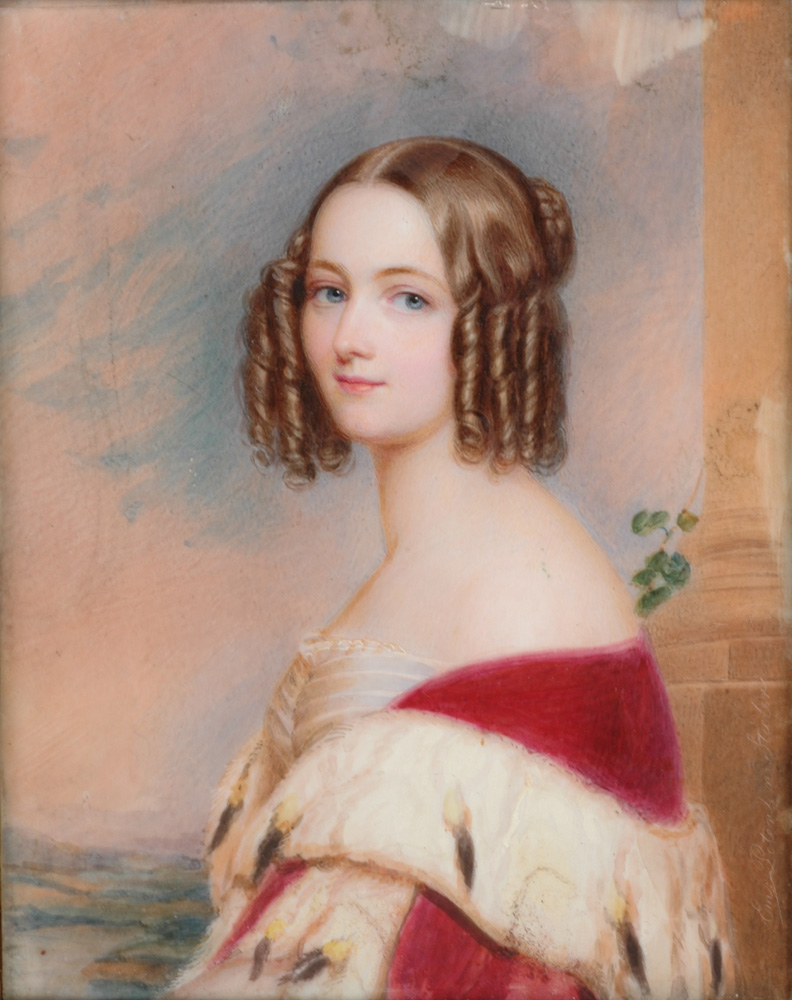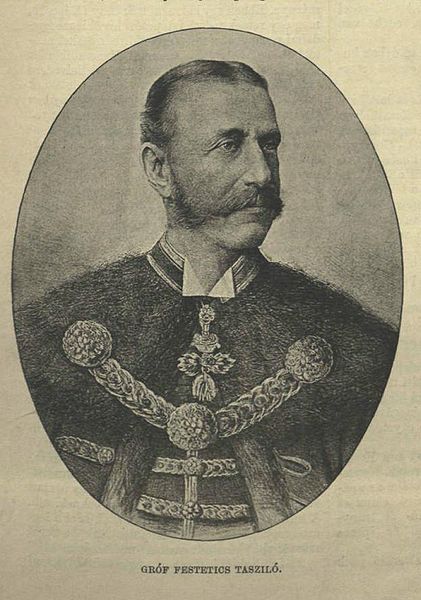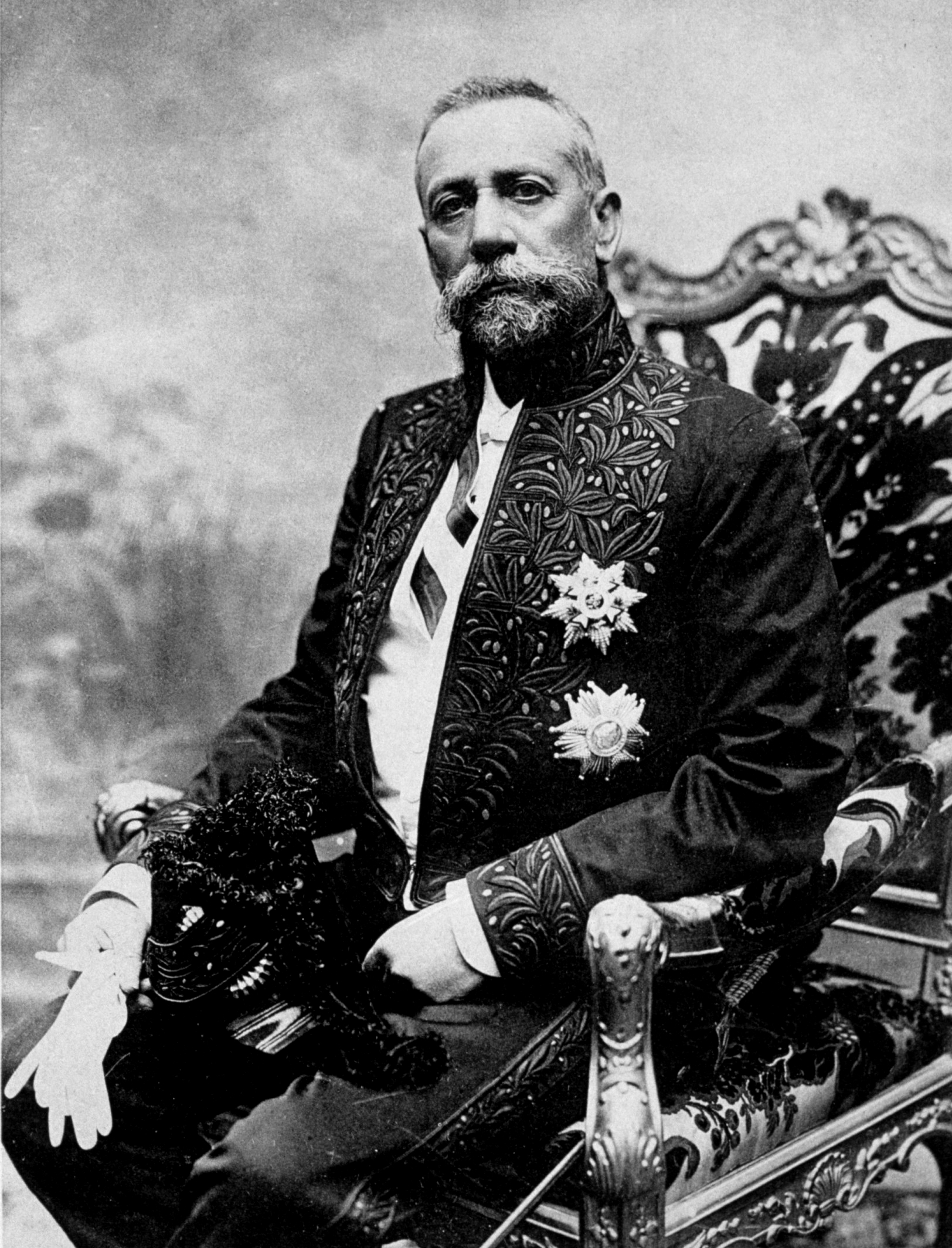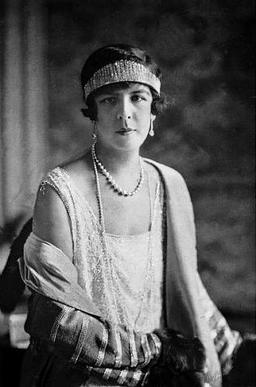-

Herşey Dahil Sadece 350 Tl'ye Web Site Sahibi Ol
Hızlı ve kolay bir şekilde sende web site sahibi olmak istiyorsan tek yapman gereken sitenin aşağısında bulunan iletişim formu üzerinden gerekli bilgileri girmen. Hepsi bu kadar.
-

Web Siteye Reklam Ver
Sende web sitemize reklam vermek veya ilan vermek istiyorsan. Tek yapman gereken sitenin en altında bulunan yere iletişim bilgilerini girmen yeterli olacaktır. Ekip arkadaşlarımız siziznle iletişime gececektir.
-

Web Sitemizin Yazarı Editörü OL
Sende kalemine güveniyorsan web sitemizde bir şeyler paylaşmak yazmak istiyorsan siteinin en aşağısında bulunan iletişim formunu kullanarak bizimle iletişime gecebilirisni
Jean-Christophe and Olympia Grant Interview to Point de Vue
 |
Prince Jean-Christophe Napoléon and Countess Olympia of Arco-Zinneberg recently gave an interview to journalist Vincent Meylan of Point de Vue. The article is accompanied by several lovely photos of the happy couple which were taken by Julie Piatti.
 |
| Prince Félix of Luxembourg in 2006 at the wedding of his brother Louis |
We learn that the prince and countess first met in Luxembourg at the eighteenth birthday celebrations of their cousin Prince Félix back in 2002. Jean-Christophe was fifteen, Olympia was fourteen. Over time, the couple developed a close relationship.
The news of Jean-Christophe and Olympia's engagement was made public in March of this year by royal historian Marlene Eilers Koenig. Jean-Christophe elaborates that he proposed to Olympia in January at Prangins, the residence of his grandmother Princess Alix Napoléon in Switzerland on Lake Geneva; the couple were walking in the forest near the lake as snow began to fall when Jean-Christophe popped the question. From a photograph in Point de Vue, we catch a glimpse of the stunning diamond engagement ring.
Speaking of the ring, it was the subject of quite an affair when it was stolen on 1 April in Paris from the prince's locked Mercedes. Jean-Christophe and Olympia were in the French capital with their parents: they were likely doing a bit of wedding planning. Princess Béatrice of Bourbon-Two Sicilies, the mother of the groom-to-be, is the author of Votre Mariage Royal (Your Royal Marriage), published in 2006. Fortunately, the police recovered the ring a few days later when they arrested the culprit of the theft.
 |
| Cathédrale Saint-Louis des Invalides |
The future Prince and Princess Napoléon confirmed that they will be married on 19 October at Les Invalides. Olympia has already selected her wedding gown. The union of the Head of House Bonaparte and the Bavarian countess, whose mother is Archduchess Maria Beatrix of Austria, will surely be the wedding of the year in French society and royal circles.
A Classical Education in Sherlock Holmes
 |
| Photo courtesy of Ray Betzner |
One of my favorite scenes in Star Trek IV: The Voyage Home is the discussion of such 20thcentury writers as (if I remember correctly) Harold Robbins and Jaqueline Suzanne. “Ah,” Spock says sagely, “the Classics.”
Recently I’ve been reading real classics of the Sherlockian world in the form of the Otto Penzler’s Sherlock Holmes Library, a paperback reprint series published in the 1990s. Seven of the nine books have sat on my shelves years – nay, decades – and I’m embarrassed to say that I’d neglected to read some of them. Because, like all classics in any field, they are still relevant.
How had I never opened T.S. Blakeney’s Sherlock Holmes: Fact or Fiction? It was published in England in 1932, the year before Vincent Starrett’s indispensable The Private Life of Sherlock Holmes (also part of Penzler’s Sherlock Holmes Library series) was published in the United States. It’s a wonderful little volume, scholarly and yet somehow like listening to an old friend.
The equally delightful Gavin Brend’s My Dear Holmes: Studies in Sherlock and James Edward Holroyd’s Baker Street By-Ways came much later (1951 and 1959), but still relatively early in the history of the Great Game. They had less to build on than those that followed, and those that followed built on them.
Other books in the Otto Penzler’s Sherlock Holmes Library series are Vincent Starrett (ed.)’s 221B: Studies in Sherlock Holmes; H.W. Bell (ed.)’s Baker Street Studies, S.C. Roberts’s Holmes & Watson: A Miscellany; John Kendrick Bangs’s R. Holmes & Co.; and James Edward Holroyd (ed.)’s Seventeen Steps to 221B.
With the single exception of the Bangs novel, all these books have influenced other writers for decades. In fact, many of the individual articles in the collections are frequently quoted and anthologized.
Whether you read them in the Penzler editions or not, read them all. Because you can’t fully appreciate where you are until you understand how you got there.
On This Day In History: The Death of Lady Mary Victoria Douglas-Hamilton, British Aristocrat Turned European Princess
On 14 May 1922, the Princess of Festetics von Tolna died at Budapest, aged seventy-one. The princess was a first cousin of Queen Carola of Saxony, Queen Stephanie of Portugal, King Carol I of Romania, and Princess Marie, Countess of Flanders. Her Serene Highness was also a third cousin of Emperor Napoléon III of the French.
 |
| William, 11th Duke of Hamilton |
 |
| Princess Marie Amélie of Baden |
The Hungarian princess had begun life as Lady Mary Victoria Douglas-Hamilton: she was born at the family home, Hamilton Palace, in Lanarkshire, Scotland, on 11 December 1850 as the daughter of William Hamilton, 11th Duke of Hamilton (1811-1863), and Princess Marie Amélie of Baden (1817-1888), who had wed in 1843. Mary Victoria followed two brothers: William Douglas-Hamilton, eventual 12th Duke of Hamilton (1845-1895), and Charles Douglas-Hamilton, 7th Earl of Selkirk (1847-1886). Mary's paternal grandparents were Alexander Hamilton, 10th Duke of Hamilton (1767-1852), and Susan Euphemia Beckford (1786-1859); her maternal grandparents were Grand Duke Karl of Baden (1786-1818) and Stéphanie de Beauharnais (1789-1860), a second cousin to Eugène de Beauharnais and Hortense de Beauharnais, the stepchildren of Emperor Napoléon I of the French.
 |
| The report of the marriage of Prince Albert of Monaco and Lady Mary Douglas-Hamilton Photograph (c) The Standard |
 |
| The Hereditary Prince and Princess of Monaco shortly after their wedding |
 |
| Hereditary Princess Mary and her son Prince Louis of Monaco |
 |
| Prince Tasziló Festetics von Tolna |
 |
| Prince György Festetics von Tolna (1882-1941) |
 |
| Princess Alexandra "Alex" Festetics von Tolna (1884-1963) |
On 26 June 1922, Prince Albert I of Monaco, the ex-husband of the late Princess of Festetics von Tolna, died one month after his first wife. Albert was succeeded by the couple's only child as Prince Louis II of Monaco. Louis II reigned until 1949, when he passed away at Monte Carlo at the age of seventy-eight on 9 May 1949. Prince Louis was succeeded by his only grandson, Prince Rainier III (1923-2005), who was the child of Louis' legitimised daughter Princess Charlotte (1898-1977) and her former husband Count Pierre de Polignac (1895-1964).
 |
| Prince Albert I of Monaco in the 1910s |
 |
| Prince Louis II of Monaco |
 |
| Princess Charlotte of Monaco, Duchess of Valentinois |
Through her first marriage, Lady Mary Hamilton-Douglas is the great-great-grandmother of Prince Albert II of Monaco (b.1958). Through her second marriage, Mary is the great-grandmother of fashion designer Prince Egon of Fürstenberg, socialite and actress Princess Ira of Fürstenberg and the Czech Minister of Foreign Affairs Prince Karel Schwarzenberg. Mary's second marriage was a happy one and lasted over forty years. Mary is buried beside her second husband Tasziló at the mausoleum of Festetics Palace.
 |
| Festetics Palace |
_future_Hereditary_Princess_of_Monaco.jpg) |
| Lady Mary Victoria Douglas-Hamilton |
Ludwig van Beethoven: Piano Concerto No.3 in C minor – Alice Sara Ott, L'Orchestre Philharmonique de Radio France, Mikko Franck (HD 1080p)
By Music Archive at 05:26
Alice Sara Ott, L'Orchestre Philharmonique de Radio France, Ludwig van Beethoven, Mikko Franck
No comments
Accompanied by the Orchestre Philharmonique de Radio France under the baton of the Finnish conductor and violinist Mikko Franck, the German-Japanese pianist Alice Sara Ott, one of the most requested artists at the classical music scene, performs Ludwig van Beethoven's Piano Concerto No.3 in C minor, Op.37. Recorded at Auditorium de Radio France, on January 27, 2018.
✻
Beethoven composed his Piano Concerto No.3 in C minor in 1799-1800, and introduced it at Vienna on April 5, 1803. The first sketches go back to 1797 – after he'd composed the B flat Piano Concerto (published as No.2), but before composition of the C major Concerto (in 1798, published as No.1). Although Beethoven played the first performance of No.3 in 1803 from a short score – no one was going to steal it from him! – he'd actually completed the music prior to April 1800, apart from a few last-minute adjustments. In other words, before he wrote the Second Symphony (Op.36), the Moonlight Piano Sonata (Op.27/2), or the Op.31 triptych for keyboard.
The model for this startlingly dramatic concerto was Mozart's C minor (K.491), which Beethoven played in public concerts. But "model" does not mean he merely imitated; indeed, the orchestra's traditional first exposition is so extensively developed that the soloist's repetition risks sounding anticlimactic. Otherwise, as Charles Rosen has written with formidable insight in The Classical Style, "There are many passages in the first movement, Allegro con brio, which allude to Mozart's concerto in the same key... particularly the role of the piano after the cadenza. But the striking development section, with [a] new melody half-recitative [and] half-aria, is entirely original, as is the new sense of weight to the form". Beethoven wrote down that cadenza several years later, to preserve the work's character and momentum, when implacable deafness seriously disadvantaged his public appearances at the keyboard.
To his contemporaries the slow movement came – and can still come – as a shock. Not only did he mark it Largo (which is to say very slowly), in 3/8 time, but chose the remote key of E major (four sharps, vs. C minor's three flats). Alone, the piano leads off for 11 measures, introducing both the main theme and ornamentation that accompanies it throughout. Here Beethoven anticipated the solo opening of his G major Fourth Concerto five years down the road, although in that work he dispensed with thematic decorations, beautiful as they were (and are) in the Largo of No.3.
Characteristically, the finale is a rondo Allegro, again in tonic C minor, with a pair of principal themes introduced by the soloist. This movement is rich in humor yet also dramatic, with a passage midway in E major to remind us where we've been. Following another (but brief) cadenza, Beethoven switches to C major, accelerates the tempo to Presto, and gives the orchestra the last word.
Source: Roger Dettmer (allmusic.com)
Ludwig van Beethoven (1770-1827)
♪ Piano Concerto No.3 in C minor, Op.37 (1800)
i. Allegro con brio [2:12]*
ii. Largo [19:32]
iii. Rondo. Allegro [29:19]
Encore:
Ludwig van Beethoven
♪ Bagatelle No.25 in A minor, WoO 59, "Für Elise" (1810) [42:49]
Alice Sara Ott, piano
L'Orchestre Philharmonique de Radio France
Conductor: Mikko Franck
Auditorium de Radio France, January 27, 2018
(HD 1080p)
* Start time of each movement
The 2018-2019 season marks a significant year for German-Japanese pianist Alice Sara Ott (b. 1988, Munich, Germany), one of the world's most in-demand classical pianists. She releases her latest album, Nightfall, featuring works by Satie, Debussy and Ravel, including Gaspard de la Nuit, one of the greatest challenges of piano literature. The album marks ten years since Alice has been signed as an exclusive recording artist to Deutsche Grammophon. She will tour the recital programme across the world, with European dates including Paris' La Seine Musicale, Stuttgart's Liederhalle, Vienna's Mozart Saal, Munich's Prinzregententheater, Baden Baden's Festspielhaus, London's Wigmore Hall and the Klavier-Festival Ruhr in Duisburg. These European dates are in addition to a nine-date recital tour across Japan, including Tokyo Opera City, in autumn 2018.
With her talent not limited to a global career as a high level performing artist, Alice Sara Ott also expresses her diverse creativity through a number of design and brand partnerships beyond the borders of classical music. She was personally requested to design a signature line of high-end leather bags for JOST, one of Germany's premium brands. Alice has also been global brand ambassador for Technics, the hi-fi audio brand of Panasonic Corporation, and she has an ongoing collaboration with the French luxury jewellery house, Chaumet.
A prominent figure on the international classical music scene, Alice Sara Ott regularly performs with the world's leading conductors and orchestras. In 2018-2019 as well as the international Nightfall recital tour, Alice will perform with NHK Symphony Orchestra Tokyo (Gianandrea Noseda), Philharmonia Orchestra (Santtu-Matias Rouvali), BBC Scottish Symphony Orchestra, Bergen Philharmonic (Edward Gardner), London Symphony Orchestra (Elim Chan), St Petersburg Philharmonic Orchestra (Yuri Temirkanov), and for a European tour with Gothenburg Symphony (Santtu-Matias Rouvali). She continues her collaboration with London Symphony Orchestra via her chamber music residency at LSO St Luke's, where she will give several Alice and Friends concerts with fellow artists including Ray Chen, Pablo Ferrández, Nemanja Radulovic, Alexey Stadler, Dimitri Ashkenazy and Francesco Tristano.
Alice Sara Ott has worked with conductors at the highest level including Lorin Maazel, Gustavo Dudamel, Pablo Heras-Casado, Paavo Järvi, Neeme Järvi, Sir Antonio Pappano, Gianandrea Noseda, Andres Orozco-Estrada, Yuri Temirkanov, Vladimir Ashkenazy, Sakari Oramo, Osmo Vänskä, Vasily Petrenko, Myung-Whun Chung, Hannu Lintu and Robin Ticciati. She continues to perform with ensembles such as Los Angeles Philharmonic Orchestra, London Symphony Orchestra, Chicago Symphony Orchestra, Washington's National Symphony Orchestra, Rundfunk-Sinfonieorchester Berlin, Royal Philharmonic Orchestra, WDR Sinfonieorchester Köln, Wiener Symphoniker and Dresdner Philharmonie.
Source: alicesaraott.com
More photos
See also
Alice Sara Ott – All the posts
The Twenty-Fourth Wedding Anniversary of the Duke and Duchess of Bragança
On 13 May 1995, Dom Duarte Pio João Miguel Gabriel Rafael de Bragança (b.1945), the Head of the Royal House of Portugal, married Dona Isabel Inês Castro Curvello de Herédia (b.1966). Duarte was the son of Dom Duarte Nuño (1907-1976), Duke of Bragança, and Princess Maria Francisca of Orléans-Bragança (1914-1968); Isabel was the daughter of Dom Jorge de Herédia and Dona Raquel Leonor Pinheiro de Castro Curvello. The Duke and Duchess of Bragança were wed at Jerónimos Monastery in Belém, Lisbon. Theirs was the first Portuguese royal marriage to be held in the country since that of the eventual King Carlos I of Portugal (1863-1908) and Queen Amélie (1865-1952; née Orléans) in 1886.
 |
| A "royal mob" observes the bullfight on 11 May at the Campo Pequeno arena. |
The celebrations surrounding the wedding of D. Duarte and D. Isabel's marriage were truly of magnificent proportions. Royal guests began arriving on Thursday, 11 May, in Lisbon - that evening, a bullfight was held that had the Duke of Bragança and dona Isabel surrounded by the Hereditary Grand Duke and Grand Duchess of Luxembourg on their left and the Countess of Paris ("Tante Bebelle" to the duke, whose late mother Maria Francisca was the sister of Isabelle, Countess of Paris). Bourbons, Habsburgs and Savoys were also in the crowd to watch the bullfight at the arena of Campo Pequeno.
 |
| Dom Duarte and Dona Isabel at the welcome dinner on 12 May at Queluz Palace. |
On Friday, 12 May, guests attended a welcome dinner hosted at Queluz Palace. The evening began with a tea served at the Palace Hotel, followed by an exhibition held by the Portuguese School of Equestrian Art and afterwards a group of Timorese people interpreted diverse typical dances with motifs related to marriage and maternity. There was also a concert performed by several student musical groups, at the end of which the dinner was served, in the Rooms of Glasses and Music of the Palace.
The royal wedding occurred on the following day, 13 May; it was broadcast live on Portuguese television. Dom Duarte had stated that "I would feel more comfortable with a quiet wedding, but I realize that a lot of people want to celebrate with us." Dona Isabel noted: "I want my wedding to be above all a religious ceremony. These are not suitable times for great parties, with so many needy people." However, owing to the 3,000 person guest-list, it was inevitable that the Bragança nuptials would be on a grand scale. The bride's wedding gown was designed by Portuguese couturier Laurinda Farmhouse and her hair was done by Alexandre of Paris.
The Duke of Bragança arrived at Jerónimos Monastery at 3:55pm with his brother Dom Miguel. Shortly thereafter, Dona Isabel arrived on the arm of her father, Dom Jorge de Herédia. The religious ceremony was conducted by His Beatitude the Patriarch Cardinal of Lisbon, D. António Ribeiro. There was a sense that the wedding of the Head of the Royal House of Portugal and his Consort was a semi-state occasion, owing to the attendance of the Portuguese President Mário Soares with his wife as well as of Prime Minister Aníbal Cavaco Silva with his wife. Of course, the Gotha was also out in full force to witness the wedding of one of their most amiable cousins to the splendid young woman who had accepted his hand in marriage.
 |
| Dom Duarte arrives with his brother Dom Miguel |
 |
| Dona Isabel arrives on the arm of her father |
 |
| A view of the Roman Catholic wedding at Jerónimos Monastery |
Eurohistory wishes TRH the Duke and Duchess of Bragança a very Happy Anniversary!






































